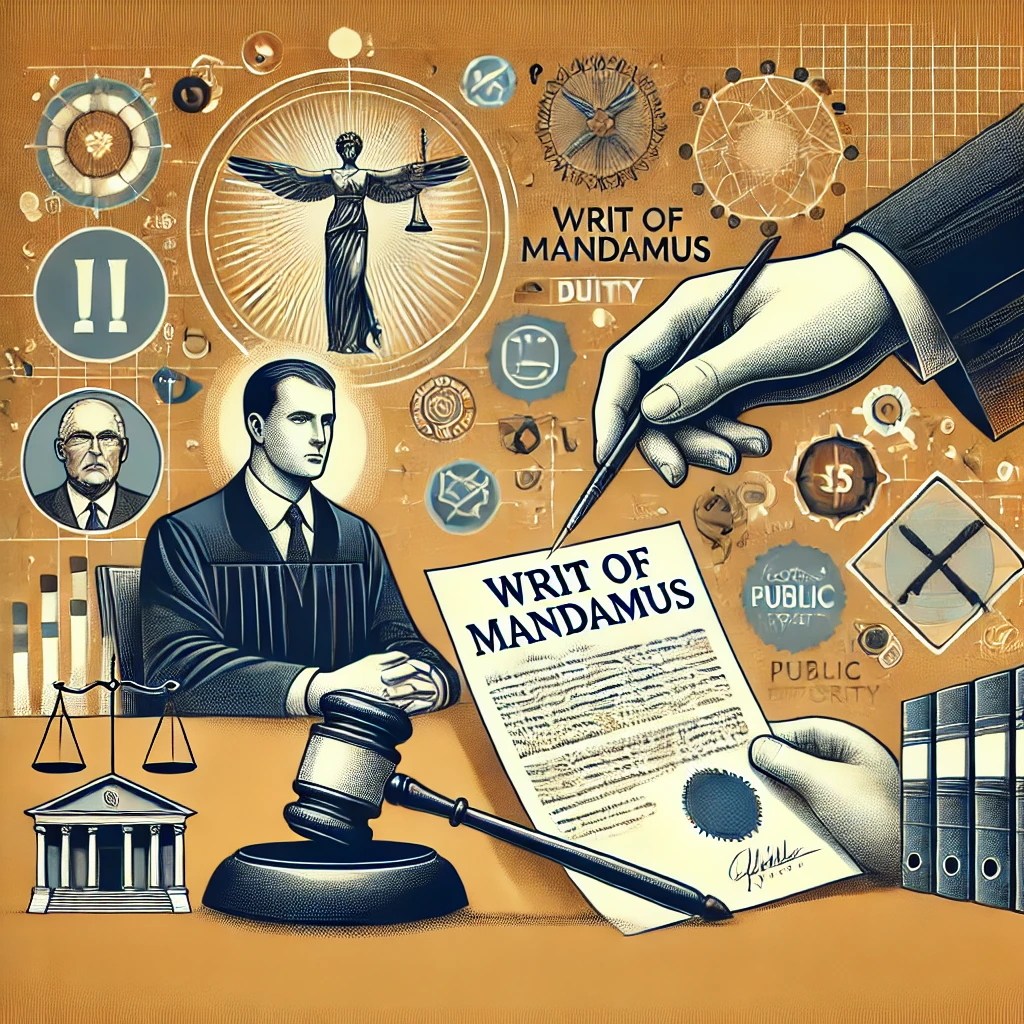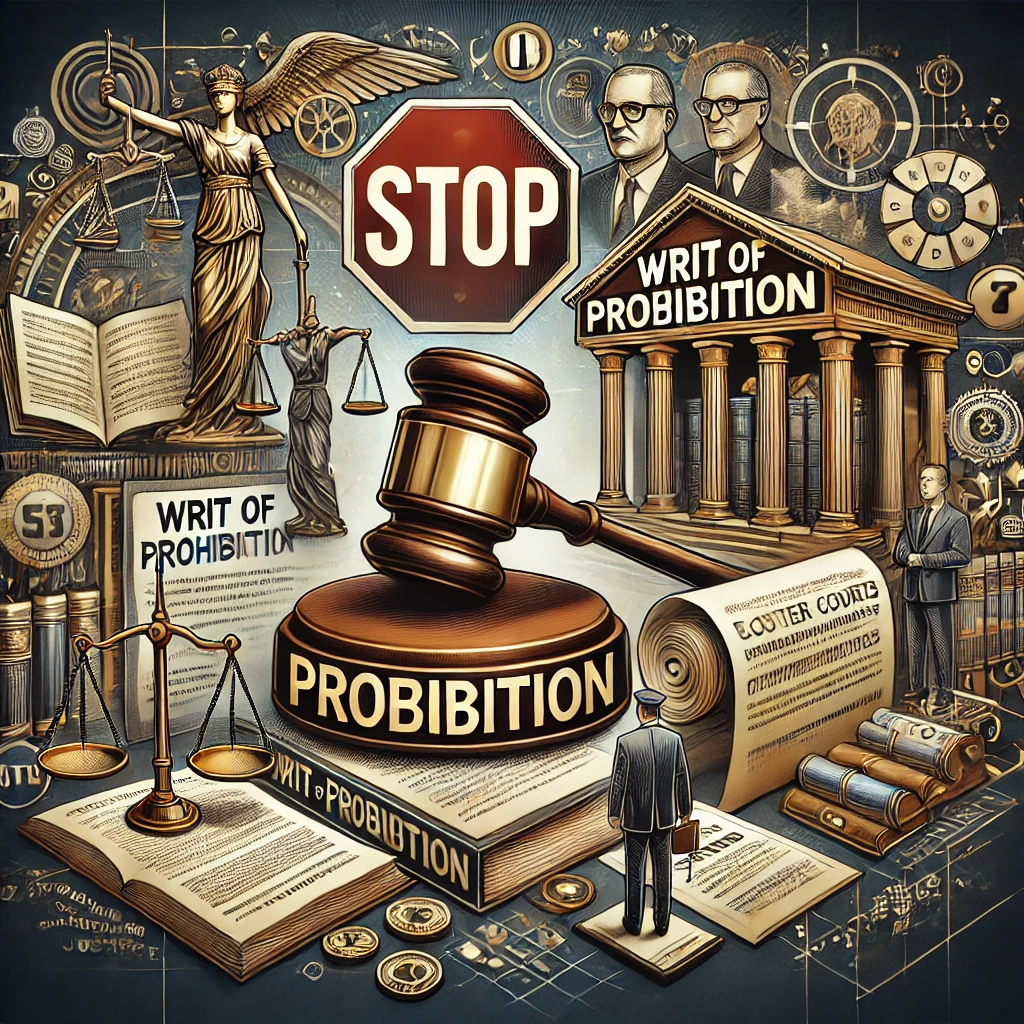Writs are formal written orders given by a superior authority, be it courts, to protect individual rights. These are the strong weapons that dispense justice and follow the laws of the land. In the Indian judicial system, writs are a tool to safeguard the fundamental rights of citizens. The Constitution has conferred various kinds of writs to keep the authority in check from any kind of abuse. These mandamus orders can force governmental officials to do or not do some illegal acts. Writs have a historical background and culture in the Indian judiciary. They empower the citizens to seek judicial protection of their rights. Writs protect fundamental rights.
- Courts can issue writs on public officials and authorities .
- The Indian Constitution talks about five kinds of writs.
- Writs in the Indian Constitution maintain the power balance .
What are Writs?
Writs are formal orders issued by a court directing an individual or an authority to act or refrain from acting .In India, the power rests in the hands of the Supreme Court and High Courts. This gives assured protection and guarantee of citizen’s Fundamental Rights. Writs in the Indian Constitution play a very important role in protecting citizen rights. The Constitution has designed five types of writs to address varying legal issues and enforce fundamental rights.
Types of Writs
The Indian Constitution speaks of five different kinds of writs, each possessing a unique role. Take a closer look at these writs below:
Habeas Corpus
This writ ensures that someone who has been detained appears before the court. It saves a person from unlawful detention. The court can issue this writ when somebody is illegally detained. This writ compels the custodian to bring the detainee to the court, and the court then validates whether the detainment was legal or not.
Mandamus
The writ of Mandamus directs a public authority to perform a duty he is legally bound to do. It forbids government officials from exploiting their authority. When a public officer neglects to do his official duties, people can move the court for this writ. The court then orders the officer to perform the duty.
Prohibition
The writ of Prohibition is directed to an inferior court or tribunal, requiring them not to presume anything beyond their authority. It forbids any court or tribunal from going over and above its lawful powers. When a court exceeds its powers, the superior court can issue this writ, restrained the lower court from doing so.
Certiorari
Certiorari is one of the writs issued by a superior court that seeks to review the judgment of an inferior court. This type of writ corrects errors on the decision of inferior courts or tribunals. The case for the lower court may be quashed or modified in case it is unreasonable.
Quo Warranto
This writ challenges a person occupying a public office illegally. It asks the person to explain by what authority they occupy the office. Quo Warranto ensures that no individual holds public office illegally. If found guilty, the court can remove the individual from office.

Eligibility to File Writs Petition
Not everyone can file a writs petition.The Indian Constitution empowers both the Supreme Court and High Courts to issue writs. Article 32 empowers the Supreme Court to issue writs for the enforcement of the fundamental rights. Article 226 gives power to the High Courts to issue writs for violation of legal and fundamental rights. This two-step method makes sure that the citizen gets relief either at state or at national level. Key eligibility points: Any person, whose fundamental rights have been violated, can file a writ petition.
- A writ petition may also be filed by a person on behalf of a person who is incapable to approach the court.
- Direct filing to the Supreme Court is allowed only for writs of the Indian Constitution that relate to violation of fundamental rights.
- In case of other legal rights, the writ petitions are ordinarily filed in the High Court.
Writs in the Indian Constitution
Constitutional Writs are the pillars of judicial review and protection through rights. A closer view can be taken, as follows, to see how the writs uphold the rule of law in the country:
Article 32: Right to Constitutional Remedies
Article 32 is known as the “soul and heart” of the Indian Constitution. This speaks about the jurisdiction of the Supreme Court to issue writs for the purpose of enforcing fundamental rights. This is a right of direct access to citizens. When their fundamental rights are violated, they are permitted to go directly to the Supreme Court under Article 32.
Article 226: The Powers of the High Courts Regarding Writs
Article 226 enables High Courts to grant writs concerning both legal and fundamental rights. In this article, the scope of High Courts is more. They can even issue their respective writs even if the case does not involve fundamental rights. Thus, justice is not only provided by the Supreme Court but by the state High Courts also.

Significance of Writs
Writing is vital for safeguarding the people’s fundamental rights against their violation. They confer powers on courts in terms of intervention or intervention into cases characterized by injustice, thereby ensuring accountability by governments in terms of legal compliance and upholding freedom of individual choices as guided by democratic principles to realize the rule of law.
Protection of Rights
Writs play a very central role in laying down safeguards the most basic rights of the citizens against any form of violation by the state or people. They ensure instantaneous action for correction of injustices, providing legally defined remedies, which are addressed directly to breaches of rights, with which the rule of law is strengthened and constitutional order is maintained in a democratic society.
Judicial Oversight
Writs enable courts to exercise supervisory judicial on the acts of public authorities. This supervision has the effect of checking the misuse of authority and capricious action of the state, in which liabilities can be held forth by the three estates of the realm that are to be ensured by law in the administration of the jurisdiction.
Access to Justice
Writs provide direct and swift means of access towards seeking justice by an individual. They enable the citizen directly to approach higher courts without intricate long drawn legal procedures. Easy accessibility would ensure that violation of rights is redressed promptly thereby averting potential harm and ensuring effective redress.
Accountability of the Government
Writs are to be used as power tools for making the government accountable and responsible for their action. They bind public authority to perform their duties in strict conformity with the law as well as prevent misuse and irresponsible conducts by the government and its officers. This mechanism rejuvenates public trust in the institutional systems and brings about a responsive and responsible administration.
Maintenance of Rule of Law
The issuance of writs by the courts ensures that the rule of law triumphs rather than the whims and caprices of arbitrary decisions and actions. In this regard, the issuing of writs provides courts with an enabling mechanism to check cases of injustice, thus acting as protectors of legal order for the state and others.
Restoration of Public Confidence
Writs restore public confidence in the judiciary and in the legal system by providing legal remedies to violations of rights. When citizens witness effective legal interventions against injustice, it strengthens their belief in constitutional protection and in the fairness of the judicial process.
To Prevent Illegal Detention
The writ of habeas corpus is one of the safeguards that prevent illegal detention, hence safegurd liberties. Thus, detained persons are brought before the court as soon as possible protecting a citizen from the arbitrary arrest or detention provided by the Constitution .
Direct Approach to Higher Courts
Writs place the right of the citizen in the hands of the enabling of directly approaching either Supreme Court or High Courts for the redemption of the rights. This direct access eliminates delays and complexities in lower courts and redresses violations with due judicial attention and remedies.

Procedure for filing Writ Petition
A writ petition generally speaks of the legal process dealing with violations of fundamental rights. It is segmented into three phases, namely: consulting a lawyer, drafting the petition, and submitting it to the court, along with such procedures as ensure the right hearing and handing over the justice. Generally, in simpler words, filing a writ petition is: Consult Legal Expert
Before filing a writ petition, approach a constitutional law lawyer. He will determine which writ to file- habeas corpus, mandamus, prohibition, quo warranto, or certiorari-and will help you to navigate the entire process of filing a writ petition with all legal formalities in place.
Drafting the Petition
The lawyer then drafts the writ petition outlining the facts, nature of rights violated and relief sought. The legal grounds and relevant constitutional provisions involved must be clear in the petition. Affidavits and supporting evidence should be attached to make the case more powerful and prove the violation of fundamental rights.
Court
It is presented before the appropriate court. The choice of the court is dependent on the petition. Thus, it is presented before the Supreme Court if the relief under Article 32 is sought, and before the High Court if it is Article 226, respectively. It is presented in the registry section of the court along with copies of the petition to be attached to the respective documents needed as envisaged under the rules. The registry will then verify whether the petition is presented in accordance with the procedures followed by the court before it is enrolled for a hearing.
Payment of Court Fees
Pay the court fees for filing the petition. The fee is different for every kind of writ and every court. This receipt is to be preserved as it will be required while submitting and processing the writ petition.
Service of Notice
After the filing of the petition, the court will issue a notice to the opposite party. The notice is what puts across the case to the respondent. He can now state his own case. Issuance of notice must be properly served for the sake of giving people an equal opportunity to know the legal situation.
Court Hearing
The court holds the said proceeding after fixing the date of the hearing. The court provides a chance to both parties to present their arguments. The petitioner and respondent may file oral as well as written submission. The judge understands the legal complexion, evidence, and arguments put before, which enable him or her to decide whether an interim order is to be issued or not.
Interim Relief (If Applicable)
If some urgent action is needed, the petitioner may seek interim relief by the court itself even as the process is being followed. Interim relief may be a stay order, injunction, or any other measure provisional to protect the rights of the petitioner till judgment is pronounced.
Final Judgment
After going through all the case details, the court passes a judgment. In case the writ petition is accepted, the appropriate writ can be issued by the court to enforce the rights of the petitioner. In case the application is dismissed, the court rejects the petitioner’s plea and he can seek further relief in superior courts through appeal.
Conclusion
Writs are essential in protecting the rights of citizens and in maintaining rule of law. They also act as an extremely effective mechanism whereby anyone can challenge the misapplication of powers by authority. It is thus the Indian judiciary, which has endowed both the Supreme Court and High Courts with the writ issuing power, which made justice accessible and protection of rights sure. This information about what are writs, types of writs, and their importance would certainly prove to be helpful to one and all who wish to know the systems of the Indian courts.
| Writs UPSC Notes |
| 1. Habeas Corpus is a writ used to release a person unlawfully detained or imprisoned, protecting personal liberty. 2. Mandamus commands a public official or body to perform a duty they are legally obligated to do. 3. Prohibition prevents lower courts from exceeding their jurisdiction, directing them to stop proceedings in a case. 4. Certiorari allows a higher court to review and quash the orders of lower courts if they acted without jurisdiction. 5. Quo Warranto questions the legality of a person holding a public office, ensuring no unlawful occupation of official positions. 6. Writs are fundamental rights under the Constitution of India and can be issued by the Supreme Court and High Courts. 7. The power to issue writs reinforces judicial review, ensuring the government acts within constitutional limits. 8. Article 32 of the Indian Constitution allows the Supreme Court to issue writs for the enforcement of fundamental rights. |


